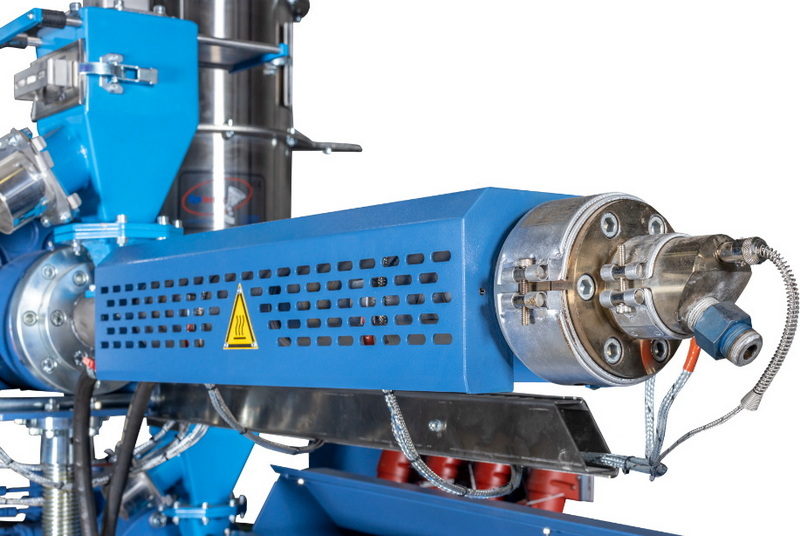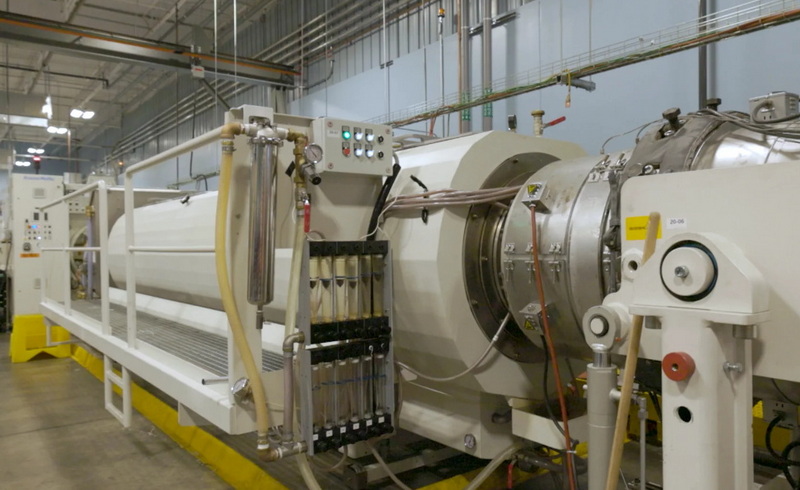Content Menu
● Introduction to Fully Automatic Extrusion Machines
>> Key Components of a Fully Automatic Extrusion Machine
>> Process Steps of Fully Automatic Extrusion
● Applications of Fully Automatic Extrusion Machines
>> Example: Blown Film Extrusion
● Benefits of Fully Automatic Extrusion Machines
● Choosing the Right Fully Automatic Extrusion Machine
● Advanced Features in Modern Fully Automatic Extrusion Machines
● Future Developments in Extrusion Technology
● Conclusion
● FAQs
>> 1. What are the primary components of a fully automatic extrusion machine?
>> 2. How does the automation system contribute to the extrusion process?
>> 3. What types of materials can be processed by fully automatic extrusion machines?
>> 4. What are the benefits of using fully automatic extrusion machines in manufacturing?
>> 5. How does the choice of die affect the final product in extrusion?
Fully automatic extrusion machines are sophisticated devices designed to produce a wide range of products with minimal human intervention. These machines are integral in various industries, including plastics, metals, and composites, due to their efficiency, consistency, and ability to handle complex geometries. This article will delve into the workings of fully automatic extrusion machines, their applications, and the benefits they offer.

Introduction to Fully Automatic Extrusion Machines
Fully automatic extrusion machines operate on the principle of applying high pressure and temperature to convert solid materials into continuous profiles. The process involves several key components and steps, which are crucial for achieving the desired product quality and consistency.
Key Components of a Fully Automatic Extrusion Machine
1. Extruder: This is the core machine that melts and pushes the material through a die. It consists of a heated barrel equipped with a rotating screw, which propels the material forward while applying heat to melt it.
2. Die: A specialized tool designed to shape the molten material into the desired form. The die determines the cross-sectional profile of the final product.
3. Automation Systems: These include PLCs (Programmable Logic Controllers), sensors, and software that control and monitor the process, ensuring precise temperature and pressure control.
Process Steps of Fully Automatic Extrusion
1. Material Feeding: Raw materials are fed into the extruder through a hopper, ensuring a consistent supply of material for the extrusion process.
2. Melting: The material is heated and melted as it moves through the extruder barrel. Precise temperature control is essential to ensure the material reaches the optimal melting point.
3. Extrusion Through the Die: The molten material is forced through a die to achieve the desired shape.
4. Cooling: The extruded product is cooled to solidify its shape. This can be done using air, water, or other cooling mediums depending on the material and desired properties.
5. Cutting and Finishing: The extruded product is cut to the required length and undergoes finishing processes such as grinding or coating.
Applications of Fully Automatic Extrusion Machines
Fully automatic extrusion machines are used in a wide range of industries:
- Plastics Industry: For producing pipes, profiles, and films. Plastic extrusion machines are versatile and can handle various materials like PVC, PE, and PP.
- Metal Industry: For producing aluminum and lead profiles. These machines can shape metals into complex geometries, especially in hot extrusion processes.
- Composite Materials: Used in manufacturing composite pipes and profiles, offering enhanced strength and durability.
Example: Blown Film Extrusion
Blown film extrusion is a specialized process used to produce plastic films. The process involves melting plastic resin and forming it into a continuous tubular film.
1. Material Feeding: Plastic resins are fed into the extruder hopper.
2. Extrusion: The plastic is melted and pushed through a circular die, forming a cylindrical bubble.
3. Air Cooling and Inflation: Air is introduced into the bubble to inflate it, while it is cooled by surrounding air.
4. Film Cooling and Shaping: The bubble is pulled through cooling rolls to determine its width and thickness.
5. Film Winding: The film is wound onto rolls or spools.
Benefits of Fully Automatic Extrusion Machines
1. High Efficiency and Consistency: These machines can operate continuously with minimal human intervention, reducing labor costs and increasing productivity.
2. Versatility: They can handle a variety of materials and produce complex geometries, making them suitable for diverse applications.
3. Precision Control: Automation systems ensure precise control over temperature and pressure, leading to consistent product quality.
4. Cost-Effectiveness: By reducing manual labor and minimizing waste, fully automatic extrusion machines offer significant cost savings over traditional methods.
5. Environmental Benefits: With precise control over production parameters, these machines can help reduce energy consumption and minimize environmental impact.
Choosing the Right Fully Automatic Extrusion Machine
When selecting a fully automatic extrusion machine, several factors must be considered:
- Material Compatibility: Ensure the machine can handle the specific material required for your products.
- Output Capacity: Choose a machine that meets your production needs in terms of speed and volume.
- Automation Level: Fully automated machines are ideal for high-volume production, reducing labor costs and increasing efficiency.
- Maintenance Access: Easy access to components is crucial for reducing downtime and ensuring optimal operation.
- Energy Efficiency: Consider machines with advanced energy-saving features to reduce operational costs.

Advanced Features in Modern Fully Automatic Extrusion Machines
Modern fully automatic extrusion machines often include advanced features such as:
- Real-Time Monitoring Systems: These allow operators to track production parameters in real-time, enabling quick adjustments to maintain optimal conditions.
- Predictive Maintenance: Some machines are equipped with sensors that predict when maintenance is required, reducing unexpected downtime.
- Integration with Industry 4.0 Technologies: Many machines can be integrated with broader manufacturing systems, enhancing data-driven decision-making and optimizing production workflows.
Future Developments in Extrusion Technology
As technology continues to evolve, fully automatic extrusion machines are likely to see advancements in areas such as:
- Artificial Intelligence (AI) Integration: AI can enhance predictive maintenance, optimize production parameters, and improve product quality by analyzing real-time data.
- Sustainable Materials: There will be a growing focus on using recycled materials and bioplastics, which require specialized extrusion processes.
- Customization and Personalization: With advancements in automation and data analysis, machines may be able to produce highly customized products efficiently.
Conclusion
Fully automatic extrusion machines are powerful tools in modern manufacturing, offering high efficiency, consistency, and versatility. They are integral in various industries, from plastics to metals, and play a crucial role in producing complex profiles with minimal human intervention. By understanding the components, process steps, and benefits of these machines, manufacturers can optimize their production processes and meet the demands of a rapidly evolving market.

FAQs
1. What are the primary components of a fully automatic extrusion machine?
A fully automatic extrusion machine consists of an extruder, die, and automation systems. The extruder melts and pushes the material through the die, which shapes it into the desired form. Automation systems control and monitor the process to ensure precision.
2. How does the automation system contribute to the extrusion process?
The automation system, including PLCs and sensors, ensures precise control over temperature and pressure. This is crucial for maintaining consistent product quality and adapting to process variations in real-time.
3. What types of materials can be processed by fully automatic extrusion machines?
Fully automatic extrusion machines can handle a variety of materials, including thermoplastics like PVC and PE, metals such as aluminum and lead, and composite materials.
4. What are the benefits of using fully automatic extrusion machines in manufacturing?
The benefits include high efficiency and consistency, reduced labor costs, and the ability to produce complex geometries. These machines also offer precise control over production parameters, ensuring consistent product quality.
5. How does the choice of die affect the final product in extrusion?
The die is crucial in shaping the molten material into the desired form. It determines the cross-sectional profile of the final product, making it essential for achieving specific product dimensions and features.






















